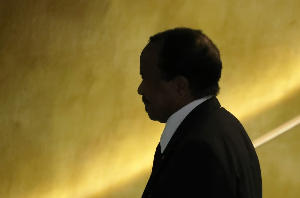A study commissioned by the Cameroonian coalition, ‘Publish what you pay’ and supported by Natural Resources Governance Institute, highlighted the fact that, if indeed, the commitment of the Australian mining junior Sundance Resources to environmental compensation under its iron ore project in Cameroon Mbalam area is to encourage the commune, then it is insufficient as regards the African standards as it hardly survive a deep analysis.
In its publication on environmental impact study in 2010, Camiron, the subsidiary in Cameroon from the Australian operator indicated that, "The Mbalam project will produce about 17 million tonnes of CO2 over the lifetime of the project.
Project will not be carbon neutral, but the proposal to protect the UFA 10034 with 164,000 ha of intact forest protects a carbon of over 200 million tonnes of CO2".
The Independent Expert Conducting Compensation Analysis, James Atworth, highlights two facts. He already considered that the environmental footprint has been minimized because the study did not account for the need to build a new hydroelectric dam, in the second phase of the project.
Mr. Atworth also noted that obtaining the right to protect a forest Unit valued at 200 million tonnes of CO2, is not necessarily a panacea of compensation.
“The idea that the operation of the FMU 10-034 would endanger all but a very small proportion of the stock of 200 million tonnes of CO2 estimated in the concession area is wrong, since the operation of the UFA is made selective”, explained James Atworth.
The second reservation made to the proposal of environmental compensation of Sundance Resources in Cameroon is the volume of financial resources allocated for this purpose.
The 25-year duration of the project, the mining Convention with the Government of Cameroon, the Australian operator will have to pay an annual fee which will amount to approximately 4.00 dollars per hectare per year during the construction phase and 6.00 dollars per hectare per year during the production phase, to 164 000 ha, equivalent to 23.26 million dollars for 25 years.
Mr. Atworth observed that it is much lower than the 93 million dollars of revenues that would have been collected if the protected forest units had been exploited.
But especially, he noted, that the negotiation was not made in the best interests of the country, because the average price of carbon offsetting is 8.3 dollars per tonne of CO2. In Australia, it is 23 dollars and major groups, today set a virtual price of 40 dollars.
On the basis of these values, environmental compensation losses are in the order of 75% of what it should really be, resulting in a shortfall to win assuming maximum, 471.6 million dollars. Another parallel study conducted by Columbia Center for Sustainable Investment (CCSI) amazed at this minimum commitment.
"According to our analysis of the model Tax Convention of Mbalam iron project, if one took into account the maximum price of such environmental compensation presented by James Atworth, the impact on the profitability of the project would be only 2 percentages.
The draft should continue to present a rate of return of 24%, in accordance with its own forecasts, and the share of revenues received by the State would be around 40%, a figure in the average of several countries in Africa”, commented an expert from CCSI, Nicolas Meannling.
It should be noted that this study takes place while Cameroon is in a process of revision of its mining code. A review which is strongly influenced by the need to attract investors and which, in the opinion of civil society, and even some parliamentarians who were present at the presentation of the study, risk to effectively treate this question of environmental compensation.
Infos Business of Tuesday, 14 October 2014
Source: Ecofin Agency













